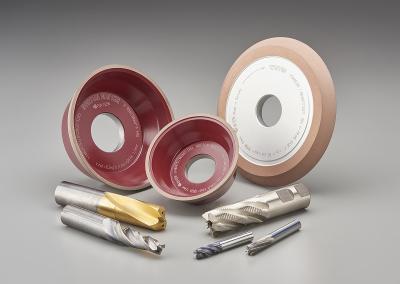
Saint-Gobain Abrasives, one of the world’s largest abrasives manufacturers, announced the introduction of its new Norton Winter V-PRIME Grinding Wheels, designed to provide excellent edge stability and long life when gashing and clearance-grinding round tools. A more stable grinding process offers greater efficiency and better part quality with less sub-surface damage. The new innovative V-PRIME resin bond combines exceptional wear resistance with the dressing ability of a standard resin bond.
Norton Winter V-PRIME grinding wheels significantly increase productivity and reduce cycle times due to requiring lower grinding forces and permitting higher feed rates. User-friendly off-line dressing optimizes grinding wheel preparation, saving time and cost. The new wheels also offer an excellent price/ performance ratio.
“We are pleased to offer V-PRIME for all applications where grinding tool edge stability is vital,” said Matt Jacob, Sr. Product Engineer, Norton│Saint-Gobain Abrasives. “Critical for meeting today’s challenging and competitive manufacturing demands, the new wheels maintain consistent geometry for long periods of time, minimizing the need for correction and increasing output and part quality.” For even more efficient operations, the new wheels can be easily implemented without any machine or process adjustments.
Norton Winter V-PRIME Grinding Wheels are available in a range of common shapes and sizes for resin bonds, and in grits including 240, 320 and 400. The wheels can be customized for specific customer requirements.
Contact Details
Related Glossary Terms
- dressing
dressing
Removal of undesirable materials from “loaded” grinding wheels using a single- or multi-point diamond or other tool. The process also exposes unused, sharp abrasive points. See loading; truing.
- feed
feed
Rate of change of position of the tool as a whole, relative to the workpiece while cutting.
- grinding
grinding
Machining operation in which material is removed from the workpiece by a powered abrasive wheel, stone, belt, paste, sheet, compound, slurry, etc. Takes various forms: surface grinding (creates flat and/or squared surfaces); cylindrical grinding (for external cylindrical and tapered shapes, fillets, undercuts, etc.); centerless grinding; chamfering; thread and form grinding; tool and cutter grinding; offhand grinding; lapping and polishing (grinding with extremely fine grits to create ultrasmooth surfaces); honing; and disc grinding.
- grinding wheel
grinding wheel
Wheel formed from abrasive material mixed in a suitable matrix. Takes a variety of shapes but falls into two basic categories: one that cuts on its periphery, as in reciprocating grinding, and one that cuts on its side or face, as in tool and cutter grinding.
- wear resistance
wear resistance
Ability of the tool to withstand stresses that cause it to wear during cutting; an attribute linked to alloy composition, base material, thermal conditions, type of tooling and operation and other variables.
